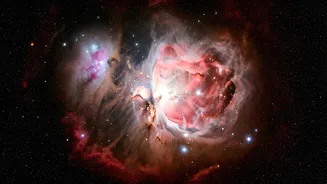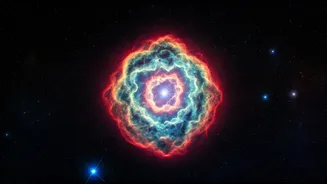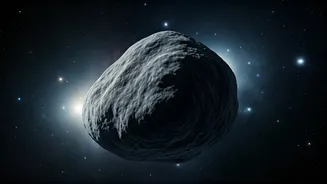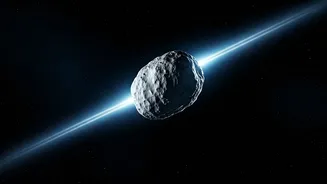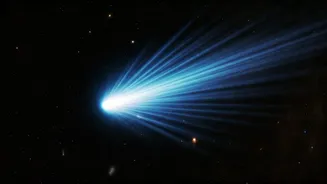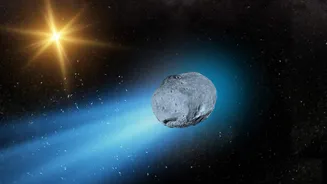Comet's Mysterious Origins
The core of the discussion stems from the enigmatic nature of the 3I/ATLAS comet, and its origins. Speculations about its artificial nature have risen,
as a consequence of the warning from a Harvard astrophysicist. The primary issue at hand is the potential of technology, particularly AI, in altering our comprehension of astronomical bodies. This opens up intriguing avenues for investigation. Some may consider the possibility that AI plays a role, intentionally or unintentionally, in causing these celestial anomalies. The possibility of such actions has spurred debate among scientists and tech enthusiasts. The discussions surrounding 3I/ATLAS serve to highlight our continuous efforts to interpret the universe, with AI becoming increasingly intertwined with our scientific investigation.
AI’s Emerging Role
AI is increasingly becoming a critical tool in many sectors. However, its influence goes further than it is thought to. Technologies like ChatGPT are complex and not always completely understood by their users. These technologies can process vast data sets and recognize patterns in the data. In the realm of astrophysics, AI is used to analyze astronomical data. This data assists in the identification of obscure phenomena. AI is able to process complex datasets and model different scenarios. The discussion surrounding 3I/ATLAS gives a glimpse of the potential implications of AI. This also highlights the crucial need for transparency and critical assessment of how AI is used, ensuring that these technological advancements align with scientific integrity. This is also important to create a responsible application of artificial intelligence.
Data and Discovery
AI is fundamentally reshaping how researchers analyze and interpret data. This can include anything from massive datasets collected by telescopes to models that can simulate the universe’s evolution. When dealing with celestial bodies, the data can be really complex. AI’s ability to process vast quantities of data is important for sorting it and gaining valuable insights that might be missed by human analysis. For example, by using AI, researchers can identify subtle clues within vast amounts of astronomical data. These subtle clues could be associated with the movement of an anomaly in space, such as the 3I/ATLAS comet. This process not only accelerates discovery but also challenges us to rethink established scientific methods. Moreover, it urges researchers to use a critical approach to these advanced technologies.
Future Implications
The merging of astrophysics and AI is ushering in a new era of scientific exploration. The discussions around 3I/ATLAS are a preview of what is coming. As AI technology continues to develop, it will inevitably impact how we collect data and understand the universe. However, it is vital to acknowledge the challenges. One major difficulty is ensuring transparency and avoiding bias. Scientific endeavors, especially those involving AI, necessitate meticulous review and a focus on transparency. Furthermore, it is very important that we emphasize the ethical implications of AI’s use. This helps to secure the future of scientific investigation and discovery. It also assures it is based on sound principles, and that it is always aimed at the betterment of mankind.


